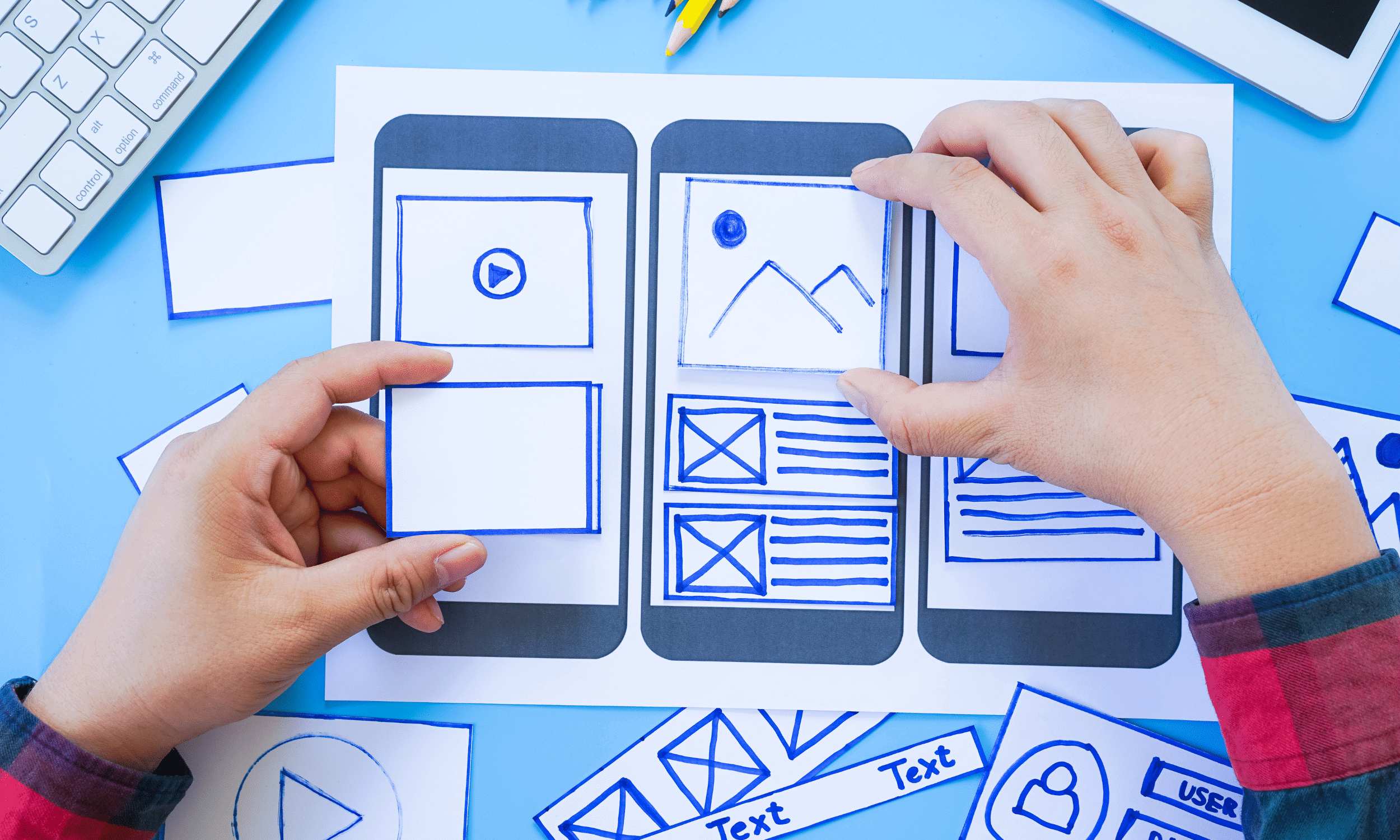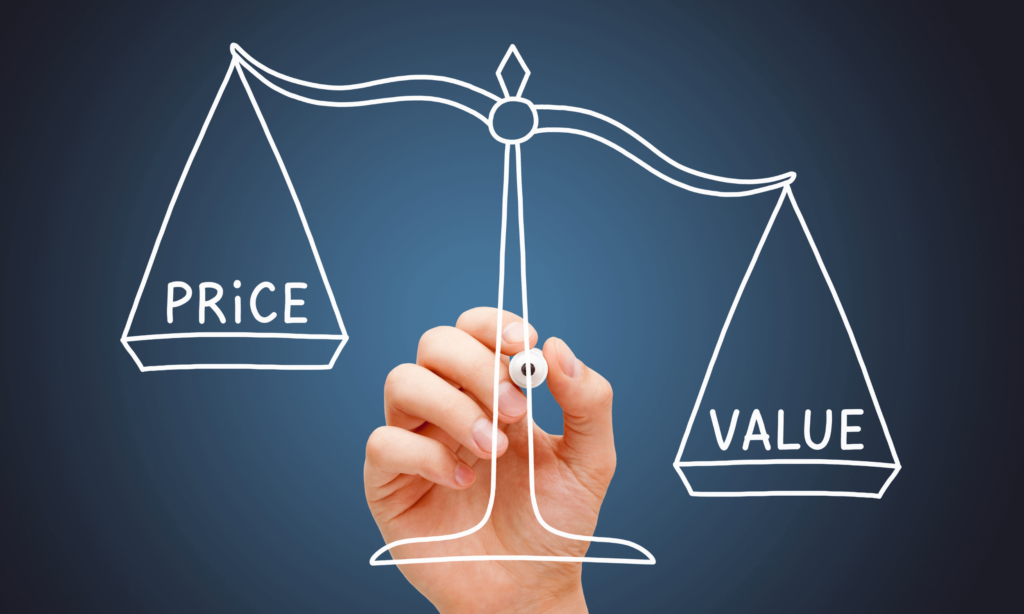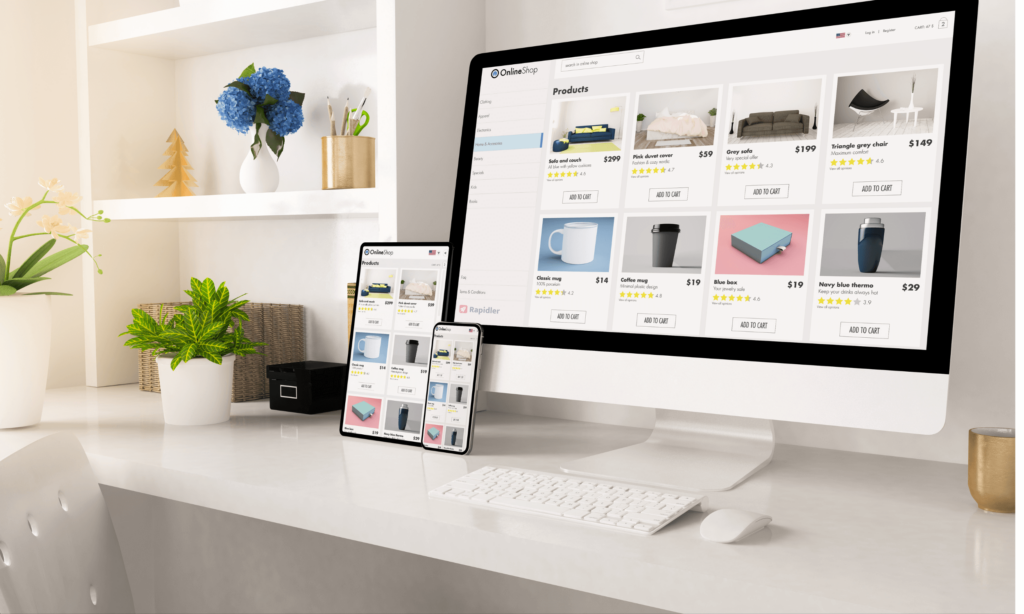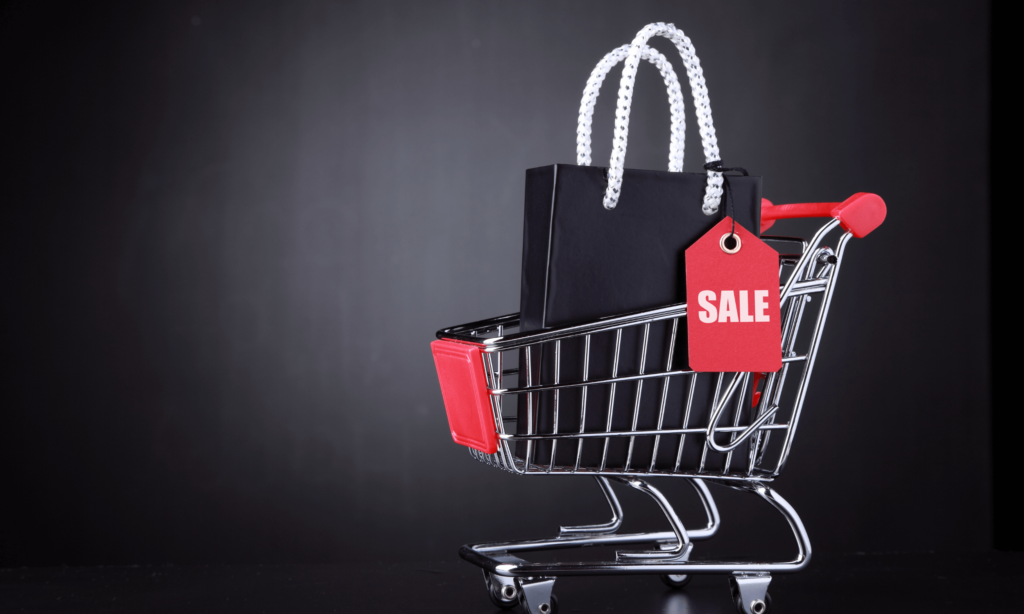Ready to dive into the world of email marketing and watch your sales soar? You’re in for a treat! In this comprehensive guide, we’re going to explore the ins and outs of Shopify email marketing, from building your list to crafting campaigns that’ll have your customers hitting that “Buy Now” button.
Before we jump in, here’s a sneak peek at what we’ll be covering:
- Understanding Email Marketing for Shopify
- Building Your Email List: The Lifeblood of Your Marketing
- Segmentation Strategies for Targeted Campaigns
- Crafting Compelling Emails That Convert
- Automation Workflows: Set It and (Almost) Forget It
- Measuring Success: Key Metrics and Analytics
- Advanced Techniques and Best Practices
Now, let’s roll up our sleeves and get started! 💪
Understanding Email Marketing for Shopify
Picture this: You’re at a bustling farmer’s market, surrounded by vibrant stalls and the chatter of excited shoppers. As a store owner, wouldn’t it be amazing if you could tap each visitor on the shoulder and say, “Hey, remember that artisanal cheese you were eyeing? It’s on sale today!” That’s essentially what email marketing does for your Shopify store – but without the awkward shoulder taps. 😉
Email marketing is like having a direct line to your customers’ inboxes, allowing you to build relationships, share updates, and yes, boost those sales. But why is it so crucial for Shopify store owners? Let’s break it down:
The Power of Email Marketing for E-commerce
I’ll let you in on a little secret: email marketing is the unsung hero of e-commerce. While social media might get all the glitz and glamour, email is quietly working behind the scenes, delivering ROI that’ll make your jaw drop. Don’t believe me? Check out these stats:
- According to Campaign Monitor, every $1 spent on email marketing generates $44 in ROI. That’s a 4,400% return, folks! 🤯
- Shopify’s own data shows that email marketing drives an average of 4.29% of site visits, but accounts for 24.2% of orders. Talk about punching above its weight!
- A study by Omnisend found that welcome emails have an average open rate of 45%. That’s your first chance to make a great impression!
But it’s not just about the numbers. Email marketing gives you control that social media platforms just can’t match. You own your email list – it’s not at the mercy of algorithm changes or platform policies. Plus, it’s personal. When someone gives you their email address, they’re inviting you into their digital living room. Don’t waste that opportunity!
Why Shopify Store Owners Need to Embrace Email Marketing
Now, you might be thinking, “But I’m just a small Shopify store. Do I really need email marketing?” The answer is a resounding YES! Here’s why:
- Direct Communication: Email lets you speak directly to your customers, without fighting for attention in crowded social media feeds.
- Cost-Effective: Compared to paid advertising, email marketing is incredibly affordable, especially for small businesses.
- Builds Relationships: Regular emails help you stay top-of-mind and build trust with your audience.
- Drives Repeat Purchases: It’s easier (and cheaper) to sell to existing customers than to acquire new ones. Email helps you keep those customers coming back.
- Increases Average Order Value: With targeted promotions and product recommendations, you can encourage customers to spend more.
As Neil Patel, digital marketing guru extraordinaire, puts it: “Email marketing is the most powerful tool to take your Shopify store from surviving to thriving.” And who am I to argue with Neil? 🤷♂️
Getting Started: The Basics of Email Marketing for Shopify
Before we dive into the nitty-gritty of list building and campaign creation, let’s cover some basics. Here’s what you’ll need to get started with email marketing for your Shopify store:
- An Email Service Provider (ESP): This is the tool you’ll use to manage your list and send your emails. Shopify has its own email marketing tool, but there are also great third-party options like Klaviyo, Omnisend, or Mailchimp that integrate seamlessly with Shopify.
- A Way to Collect Emails: This could be a pop-up on your site, a footer sign-up form, or even a good old-fashioned clipboard at your physical store (if you have one).
- A Plan: What kinds of emails will you send? How often? What’s your goal for each campaign?
- Great Content: Remember, you’re a guest in your subscribers’ inboxes. Make sure you’re bringing something valuable to the party!
Now, I can almost hear you saying, “But wait! I’m not a marketing expert or a tech wizard!” Don’t worry, my friend. That’s the beauty of modern email marketing tools – they make it easy for anyone to create professional-looking emails and automate their campaigns. You don’t need to be Don Draper or Steve Jobs to succeed at this. (Although a bit of their creativity and innovation wouldn’t hurt! 😉)
The Legal Side: Staying Compliant
Before we go any further, let’s talk about the elephant in the room: spam. Nobody likes it, and more importantly, it’s illegal. As a responsible Shopify store owner, you need to make sure your email marketing practices are above board. Here are the key things to remember:
- Get Permission: Always, always, always get explicit consent before adding someone to your email list. No buying lists, no sneaky pre-checked boxes, no “but they gave me their business card” excuses.
- Provide an Unsubscribe Option: Every email you send should have a clear and easy way for recipients to opt out.
- Be Honest: Don’t use misleading subject lines or false information in your emails.
- Include Your Physical Address: This is required by law in many countries, including the US (CAN-SPAM Act) and Canada (CASL).
These rules might seem restrictive, but they’re actually there to help you. By following them, you ensure that your email list is full of people who genuinely want to hear from you. And that’s the foundation of successful email marketing!
As Pat Flynn, founder of Smart Passive Income, wisely says: “Your email list is a group of people who have raised their hands and said, ‘Yes, I want to hear more from you.’ Treat that permission with respect, and you’ll build a loyal tribe of customers and fans.”
Setting Your Email Marketing Goals
Before you start crafting emails and building your list, it’s crucial to define what you want to achieve with your email marketing efforts. Your goals will guide everything from the types of emails you send to how you measure success. Here are some common email marketing goals for Shopify stores:
- Increase Sales: This is the big one for most store owners. You might aim to boost overall revenue, increase average order value, or improve conversion rates.
- Build Customer Loyalty: Email can help you turn one-time buyers into repeat customers and brand advocates.
- Reduce Cart Abandonment: A well-timed email can be just the nudge a customer needs to complete their purchase.
- Educate Customers: Use email to share product information, usage tips, or industry insights that add value for your subscribers.
- Drive Traffic to Your Store: Email can be a powerful tool for getting eyes on new products or blog content.
Your goals might be a combination of these, or something entirely different. The important thing is to have clear, measurable objectives. As the saying goes, “If you aim at nothing, you’ll hit it every time!” 🎯
Understanding Your Audience
Now, before we wrap up this section, let’s talk about the most important element in your email marketing strategy: your audience. The better you understand your customers, the more effective your emails will be.
Start by asking yourself these questions:
- Who are my ideal customers?
- What problems do my products solve for them?
- What kind of language do they use?
- What are their interests beyond my products?
- When and how do they prefer to shop?
The answers to these questions will help you craft emails that resonate with your audience. Remember, effective email marketing isn’t about blasting out messages to as many people as possible. It’s about sending the right message to the right person at the right time.
As John Lee Dumas, host of the Entrepreneurs on Fire podcast, often says: “Success in business requires two things: knowing your customer and knowing yourself.” Email marketing is no different!
Alright, now that we’ve laid the groundwork, it’s time to roll up our sleeves and start building that email list. In the next section, we’ll explore proven strategies to grow your subscriber base and set the stage for email marketing success. Get ready to watch those numbers climb! 📈
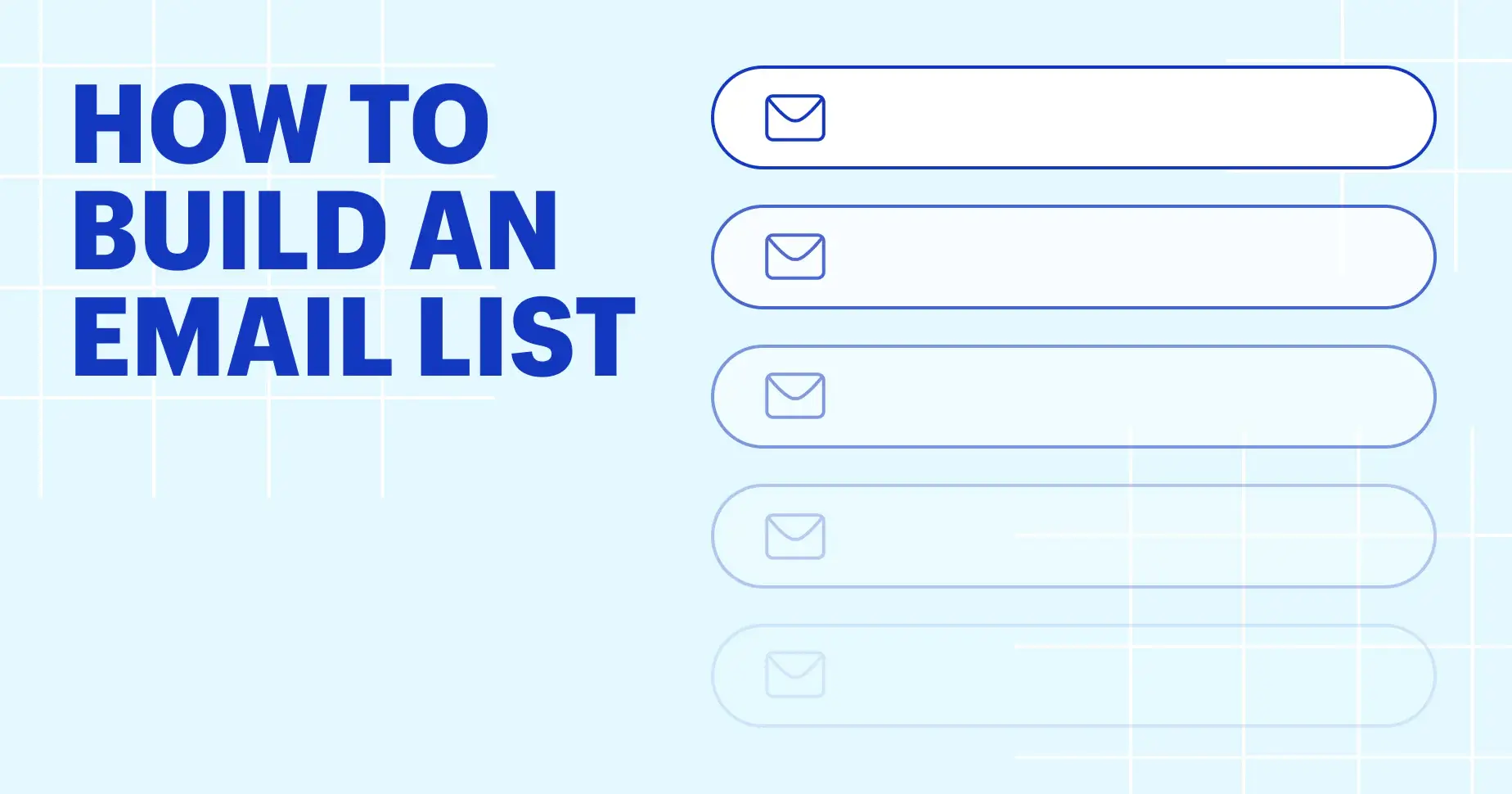
Building Your Email List: The Lifeblood of Your Marketing
Alright, let’s dive into the juicy stuff! 🍊 Building your email list is like planting a garden. It takes time, effort, and a bit of know-how, but once those seeds start sprouting, you’ll have a bountiful harvest of engaged subscribers ready to nurture into loyal customers.
Remember, quality trumps quantity every time. We’re not just after any old email address – we want subscribers who are genuinely interested in what you have to offer. So, let’s roll up our sleeves and get planting!
The Art of the Opt-In: Creating Irresistible Sign-Up Forms
Your sign-up form is like the front door to your email list. It needs to be inviting, clear, and give people a compelling reason to step inside. Here are some tips to create opt-in forms that convert:
- Keep it Simple: Ask for minimal information – usually just an email address is enough to start. The less you ask for, the more likely people are to sign up.
- Offer Value: What’s in it for them? Whether it’s exclusive discounts, early access to sales, or valuable content, make sure you’re giving people a reason to hand over their email.
- Use Action-Oriented Language: Instead of a boring “Subscribe” button, try something more exciting like “Join the VIP List” or “Get Exclusive Deals”.
- Place Forms Strategically: Your homepage, blog posts, and checkout page are all prime real estate for sign-up forms.
- Make it Mobile-Friendly: With more people shopping on mobile than ever, your forms need to look good and function well on smaller screens.
Pro tip: A/B test different versions of your sign-up forms to see what resonates best with your audience. You might be surprised by what works!
The Power of Pop-Ups (When Done Right)
Now, I know what you’re thinking. “Pop-ups? Aren’t those annoying?” Well, yes and no. When done poorly, pop-ups can be the digital equivalent of that overeager salesperson who pounces on you the second you walk into a store. But when done right, they can be incredibly effective.
Here’s how to create pop-ups that convert without annoying your visitors:
- Timing is Everything: Don’t hit visitors with a pop-up the second they land on your site. Give them a chance to look around first. Exit-intent pop-ups, which appear when someone is about to leave your site, can be particularly effective.
- Make it Relevant: Use your pop-ups to offer something related to the page the visitor is on. For example, if they’re browsing summer dresses, offer a discount code for warm-weather styles.
- Design Matters: Your pop-up should be visually appealing and on-brand. No one wants to sign up for emails from a site that looks like it’s stuck in 1999.
- Easy to Dismiss: Always make sure there’s a clear and easy way to close the pop-up. Forcing people to engage is a surefire way to irritate potential customers.
- Don’t Overdo It: Limit the frequency of your pop-ups. If someone dismisses it, don’t show it to them again for at least a few days.
Remember, the goal is to enhance the user experience, not detract from it. As Rand Fishkin, founder of Moz and SparkToro, puts it: “The best marketing doesn’t feel like marketing.” Your pop-ups should feel helpful, not intrusive.
Leveraging Lead Magnets: Offer Something Valuable
Want to supercharge your list-building efforts? Enter the lead magnet. A lead magnet is something valuable you offer for free in exchange for an email address. It’s like offering a sample of your delicious homemade cookies – once people get a taste, they’ll want more!
Here are some lead magnet ideas that work well for Shopify stores:
- Discount Codes: Everyone loves a good deal. Offer a percentage off their first purchase in exchange for signing up.
- Free Shipping: If you can swing it, free shipping is a powerful motivator.
- Exclusive Content: This could be a buying guide, a lookbook, or insider tips related to your products.
- Quiz or Tool: Create an interactive experience that provides value. For example, a skincare brand could offer a “Find Your Perfect Routine” quiz.
- Free Sample: If you sell physical products, offering a free sample can be a great way to get people on your list and introduce them to your products.
Whatever you choose, make sure it’s something your ideal customer would find genuinely useful or exciting. As Pat Flynn says, “Serve first, and the sales will follow.”
Harnessing the Power of Social Proof
Humans are social creatures. We look to others to guide our decisions, especially when it comes to trying something new. That’s where social proof comes in. By showcasing how others have benefited from being on your email list, you can encourage more sign-ups.
Here are some ways to use social proof in your list-building efforts:
- Subscriber Count: If you have a substantial list, consider displaying your subscriber count. “Join 10,000+ happy customers getting exclusive deals” can be very persuasive.
- Testimonials: Feature quotes from satisfied subscribers about the value they’ve gotten from your emails.
- Social Media Integration: Show off your social media following. If you have a large, engaged audience on Instagram or Facebook, that can lend credibility to your email list too.
- Trust Badges: If you’ve won any awards or been featured in notable publications, display those badges near your sign-up forms.
Remember, people are more likely to take action when they see others have done so successfully. It’s like seeing a long line outside a restaurant – it must be good, right?
Optimizing Your Thank You Page
The moment someone signs up for your list is golden. They’re engaged, interested, and likely in a positive mood about your brand. Don’t waste this opportunity! Your thank you page (the page people see after they sign up) is prime real estate for deepening the relationship.
Here are some ideas to make the most of your thank you page:
- Set Expectations: Let them know what kind of emails they’ll be receiving and how often.
- Encourage Social Follows: Invite them to connect with you on social media platforms.
- Offer a Special Deal: Strike while the iron is hot with an exclusive offer for new subscribers.
- Ask for Referrals: If they’re excited about joining your list, they might know others who’d be interested too.
- Provide Immediate Value: If you promised a lead magnet, make sure it’s easily accessible from this page.
Neil Patel often says, “The thank you page is the most underutilized real estate in online marketing.” Don’t let yours go to waste!
Offline List Building: Don’t Forget the Real World!
In our digital age, it’s easy to forget about offline opportunities. But if you have a physical store or attend events, these can be goldmines for list building. Here are some ideas:
- In-Store Sign-Ups: Have a tablet or sign-up sheet at your checkout counter.
- Events and Trade Shows: Collect emails in exchange for entry into a prize draw.
- Business Cards: Include a QR code on your business card that leads to a sign-up page.
- Receipts: Add a URL or QR code to your receipts inviting customers to sign up for exclusive deals.
Remember, the key is to always provide value. As John Lee Dumas often says, “Provide so much value that it makes you uncomfortable.” When you do that, people will be eager to stay connected with your brand.
The Importance of List Hygiene
As your list grows, it’s important to keep it clean and healthy. This means regularly removing inactive subscribers and ensuring your emails are reaching engaged users. Here’s why this matters:
- Improved Deliverability: Email providers look at engagement rates when deciding whether to deliver your emails to the inbox or the spam folder. A clean list helps ensure your emails get through.
- Better Metrics: Inactive subscribers skew your open and click rates, making it harder to gauge the true performance of your campaigns.
- Cost Efficiency: Many email service providers charge based on the number of subscribers. Why pay for emails that are never opened?
- Targeted Marketing: A smaller, more engaged list allows you to create more targeted, effective campaigns.
Set up a regular schedule (maybe quarterly) to clean your list. Send a re-engagement campaign to inactive subscribers, and don’t be afraid to remove those who don’t respond. Remember, it’s quality over quantity!
Growing Your List: A Continuous Process
Building your email list isn’t a “set it and forget it” task. It’s an ongoing process that requires consistent effort and optimization. Here are some final tips to keep your list growing:
- Always Be Testing: Continuously test different sign-up forms, pop-ups, and lead magnets to see what works best.
- Leverage Your Content: If you have a blog, use content upgrades (bonus content related to specific blog posts) to encourage sign-ups.
- Cross-Promote: Mention your email list on your social media channels and vice versa.
- Make It Easy: Ensure that signing up for your list is a simple, friction-free process from any page on your site.
- Stay Compliant: Always follow email marketing laws and best practices to maintain trust with your subscribers.
As you embark on your list-building journey, remember the words of Seth Godin: “Permission marketing is the privilege (not the right) of delivering anticipated, personal and relevant messages to people who actually want to get them.” Treat your email list as the valuable asset it is, and it will become one of your most powerful marketing tools.
Now that we’ve covered the essentials of building your list, it’s time to dive into how to make the most of it. In the next section, we’ll explore segmentation strategies that will help you send the right messages to the right people at the right time. Get ready to take your email marketing to the next level! 🚀
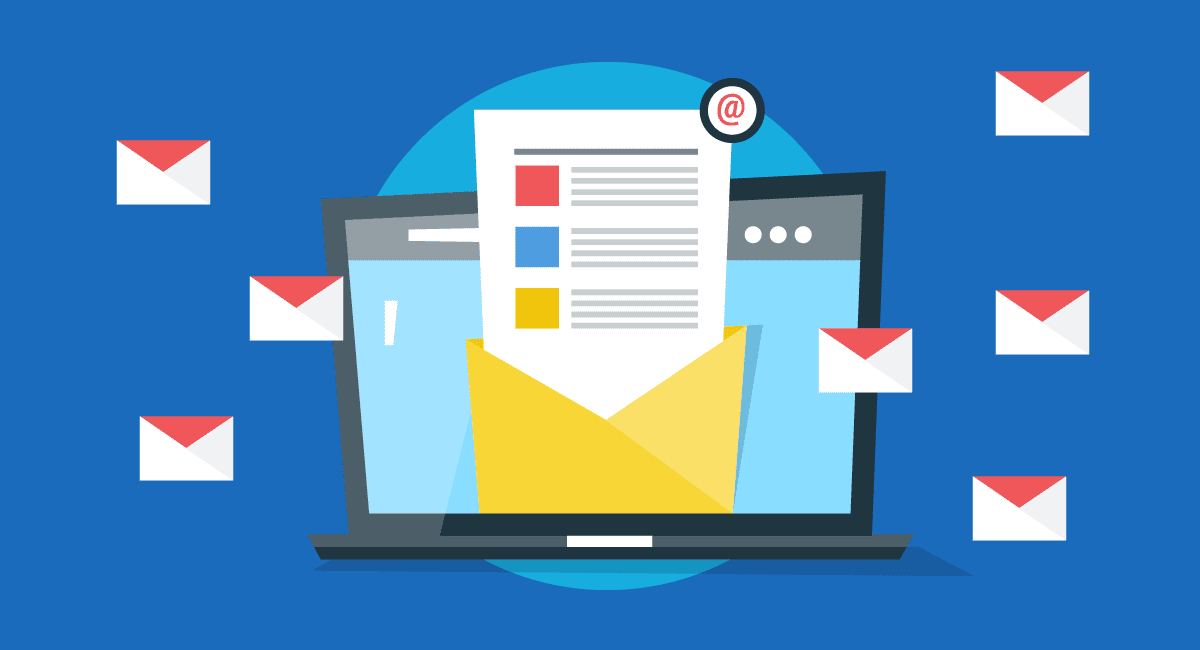
Segmentation Strategies for Targeted Campaigns
Alright, email marketing mavens, it’s time to get personal! 🎯 We’ve built our list, and now it’s time to slice and dice it (figuratively, of course) to create targeted campaigns that’ll make your subscribers feel like you’re reading their minds. Welcome to the world of email segmentation!
Imagine walking into a party where the host greets you by name, remembers your favorite drink, and introduces you to people with similar interests. That’s what good email segmentation does for your subscribers. It creates a personalized experience that makes them feel valued and understood. Let’s dive in!
What is Email Segmentation and Why Does it Matter?
Email segmentation is the practice of dividing your email list into smaller groups based on specific criteria. Instead of sending the same email to everyone, you’re tailoring your messages to different segments of your audience. It’s like being a chameleon, but instead of changing colors, you’re changing your message to match your audience. 🦎
Why bother with all this? Well, the numbers speak for themselves:
- Mailchimp found that segmented campaigns get 14.31% more opens and 100.95% more clicks than non-segmented campaigns. That’s double the engagement, folks!
- According to DMA, segmented and targeted emails generate 58% of all revenue.
- Campaign Monitor reports that marketers who used segmented campaigns noted as much as a 760% increase in revenue. Yes, you read that right – 760%!
As Neil Patel puts it, “When you segment your email list, you’re essentially creating a VIP experience for each subscriber.” And who doesn’t want to feel like a VIP?
Common Segmentation Strategies for Shopify Stores
Now that we’re all on board the segmentation train, let’s explore some popular ways to divide your list. Remember, the best segmentation strategy for you will depend on your specific business and audience. Don’t be afraid to mix and match!
- Purchase History: This is a goldmine for personalization. You can segment based on:
- Products purchased
- Total amount spent
- Frequency of purchases
- Last purchase date
- Demographics: This includes:
- Age
- Gender
- Location
- Income level (if you have this information)
- Website Behavior: How subscribers interact with your site can tell you a lot. Consider segmenting based on:
- Pages visited
- Products viewed
- Cart abandonment
- Time spent on site
- Email Engagement: Look at how subscribers interact with your emails:
- Open rates
- Click-through rates
- Inactive subscribers
- Customer Lifecycle Stage: Where is the customer in their journey with your brand?
- New subscribers
- First-time customers
- Repeat customers
- Lapsed customers
Remember, these are just starting points. Get creative with your segmentation! As Rand Fishkin says, “The best marketing strategies don’t come from ‘best practices’ or ‘case studies’ – they come from deep customer empathy and an understanding of your unique situation.”
Creating Buyer Personas for Better Segmentation
To take your segmentation to the next level, consider creating buyer personas. These are fictional representations of your ideal customers, based on real data and some educated speculation about demographics, behaviors, motivations, and goals.
Here’s a quick guide to creating buyer personas:
- Gather Data: Use your Shopify analytics, customer surveys, and even social media insights to collect information about your customers.
- Identify Patterns: Look for common characteristics and behaviors among your best customers.
- Create Profiles: Give each persona a name and write a detailed description. Include demographics, behaviors, goals, and pain points.
- Use Them: Align your email segments with these personas and craft messages that speak directly to each one.
For example, a clothing store might have personas like “Fashionista Fiona” (always after the latest trends), “Budget Betty” (looking for the best deals), and “Eco-conscious Eddie” (interested in sustainable fashion).
As John Lee Dumas often says, “Know your avatar inside and out, and success will follow.” Your buyer personas are your avatars – get to know them!
Implementing Segmentation in Your Shopify Store
Now that we’ve covered the “why” and “what” of segmentation, let’s talk about the “how”. Implementing segmentation in your Shopify store doesn’t have to be complicated. Here’s a step-by-step guide:
- Choose Your Email Service Provider (ESP): Make sure your ESP integrates well with Shopify and offers robust segmentation features. Popular options include Klaviyo, Omnisend, and Shopify Email.
- Set Up Data Collection: Ensure you’re collecting relevant data from your subscribers. This might include adding fields to your sign-up forms or using pop-ups to gather additional information.
- Create Segments: Use your ESP’s segmentation tools to create groups based on the criteria we discussed earlier.
- Design Targeted Campaigns: Create email content that speaks directly to each segment’s interests and needs.
- Test and Refine: Monitor the performance of your segmented campaigns and adjust as needed.
Pro tip: Start simple with just a few segments, and gradually increase complexity as you get more comfortable with the process.
Dynamic Segmentation: The Future of Email Marketing
Ready to take your segmentation game to the next level? Enter dynamic segmentation. This advanced technique allows subscribers to move automatically between segments based on their behavior or changes in their data.
For example, a subscriber who makes their first purchase could automatically move from a “leads” segment to a “customers” segment. Or someone who hasn’t opened your emails in 3 months could be moved to a “re-engagement” segment.
Dynamic segmentation ensures your subscribers always receive the most relevant content, without you having to manually update lists. It’s like having a super-smart robot assistant managing your email list! 🤖
The Art of Micro-Segmentation
As you get more comfortable with segmentation, you might want to explore micro-segmentation. This involves creating very specific, niche segments for hyper-targeted campaigns.
Here are some examples of micro-segments you could create:
- Customers who have purchased more than 5 times in the last 6 months
- Subscribers who always open emails sent on Tuesdays
- People who have viewed a specific product page more than 3 times but haven’t purchased
- Customers who have only ever bought items on sale
Micro-segmentation allows for incredibly personalized messaging. As Pat Flynn says, “When you speak to everyone, you speak to no one. The riches are in the niches!”
Avoiding Common Segmentation Pitfalls
While segmentation is powerful, it’s not without its challenges. Here are some common pitfalls to watch out for:
- Over-Segmenting: Creating too many small segments can be time-consuming and may not yield significant results. Start broad and get more specific as you learn.
- Ignoring Segment Overlap: Be careful not to bombard subscribers who fall into multiple segments with too many emails.
- Not Updating Segments: Customer behavior changes over time. Regularly review and update your segments to ensure they remain relevant.
- Forgetting About Privacy: Always be transparent about how you’re using customer data and comply with privacy regulations like GDPR.
Remember, segmentation is a tool to enhance the customer experience, not complicate it. As Neil Patel advises, “Keep it simple. The goal is to make your marketing more effective, not more complex.”
Measuring the Success of Your Segmentation Efforts
As with all marketing efforts, it’s crucial to measure the success of your segmentation strategy. Here are some key metrics to track:
- Open Rates: Are your segmented emails being opened more than non-segmented ones?
- Click-Through Rates: Are people engaging more with the content in your segmented emails?
- Conversion Rates: Are segmented campaigns driving more sales?
- Revenue Per Email: Are your segmented emails generating more revenue?
- Unsubscribe Rates: Are fewer people unsubscribing from your segmented campaigns?
Don’t just compare segmented to non-segmented campaigns. Look at how different segments perform against each other. This can give you valuable insights into what resonates with different parts of your audience.
As John Lee Dumas often reminds us, “What gets measured, gets managed.” Keep a close eye on these metrics and use them to continually refine your segmentation strategy.
Alright, email marketing maestros, we’ve covered a lot of ground in this section. You’re now armed with the knowledge to slice and dice your email list like a pro chef! 👨🍳 Remember, segmentation is all about delivering more value to your subscribers by sending them content that’s relevant and interesting to them.
In our next section, we’ll dive into the art of crafting compelling emails that convert. Get ready to write emails so good, your subscribers will be hitting that “Buy Now” button faster than you can say “abandoned cart!” 💌💰
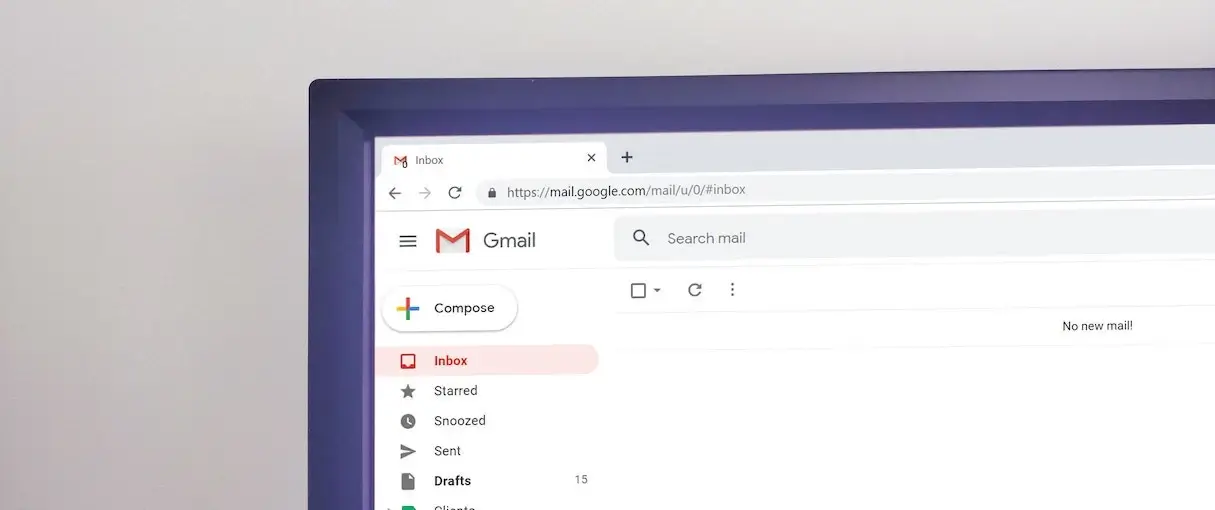
Crafting Compelling Emails That Convert
Alright, email artisans, it’s time to flex those creative muscles! 💪 We’ve built our list, we’ve segmented it like pros, and now it’s time for the main event: crafting emails that’ll have your subscribers clicking, buying, and coming back for more. Let’s turn those inbox invaders into conversion machines!
The Anatomy of a High-Converting Email
Before we dive into the nitty-gritty, let’s break down the key components of a killer email:
- Subject Line: Your ticket to the inbox party. Make it snappy!
- Preheader: The wingman to your subject line. Use it wisely!
- Body Copy: Where the magic happens. Keep it clear, concise, and compelling.
- Call-to-Action (CTA): The star of the show. Make it impossible to resist!
- Design: The wrapper that makes your email look irresistible.
Now, let’s dive deeper into each of these elements and explore how to make them work harder for your Shopify store.
Crafting Subject Lines That Demand Attention
Your subject line is like the cover of a book – it’s what makes people want to open it. Here are some tips to create subject lines that pop:
- Keep it Short and Sweet: Aim for 40 characters or less to ensure it’s fully visible on mobile devices.
- Create Urgency: Words like “Limited Time” or “Ending Soon” can drive quick action.
- Ask Questions: Pique curiosity with questions like “Ready for summer?” or “Missing something?”
- Use Numbers: “5 Must-Have Summer Styles” is more compelling than “Summer Style Guide”.
- Personalize: Including the recipient’s name can increase open rates by up to 26%.
Remember, as Neil Patel says, “Your subject line is a promise. Make sure your email content keeps that promise.”
Preheader Text: The Unsung Hero
The preheader is the text that appears after the subject line in most email clients. It’s often overlooked, but it can be a powerful tool to boost open rates. Here’s how to make the most of it:
- Complement the Subject Line: Use the preheader to expand on or clarify your subject line.
- Include a Call-to-Action: Something like “Shop now!” or “See what’s new” can entice opens.
- Tease the Content: Give a sneak peek of what’s inside the email.
- Keep it Short: Aim for 40-130 characters, as different devices show different amounts.
Think of your subject line and preheader as a dynamic duo, working together to get that all-important open!
Body Copy: Where Conversions Are Made
Now that you’ve got your subscribers to open your email, it’s time to deliver on your promise. Here are some tips for writing body copy that converts:
- Start Strong: Your opening line should hook the reader and make them want to keep reading.
- Keep it Scannable: Use short paragraphs, bullet points, and subheadings to make your email easy to skim.
- Focus on Benefits: Don’t just list features. Tell your readers how your products will improve their lives.
- Use Power Words: Words like “you,” “free,” “new,” and “save” can boost engagement.
- Tell a Story: People connect with stories. Use them to make your products more relatable.
- Create FOMO: Fear of missing out is a powerful motivator. Use phrases like “Don’t miss out” or “Limited stock available”.
As Rand Fishkin advises, “Don’t just sell the product, sell the better version of themselves that people will become with your product.”
Calls-to-Action: The Conversion Clincher
Your CTA is where the rubber meets the road. It’s what turns readers into customers. Here’s how to create CTAs that convert:
- Be Clear and Specific: “Shop Now” is good, but “Get Your Summer Look” is better.
- Create Urgency: “Buy Now – 20% Off Ends Tonight” is more compelling than just “Buy Now”.
- Use Action Words: Start with verbs like “Get,” “Shop,” “Discover,” or “Save”.
- Make it Stand Out: Use contrasting colors and plenty of white space around your CTA button.
- Consider Multiple CTAs: For longer emails, include CTAs throughout, not just at the end.
Remember, your CTA should be impossible to miss and irresistible to click!
Design: Making Your Emails Look as Good as They Read
Even the best copy can fall flat if it’s not presented well. Here are some design tips to make your emails pop:
- Keep it On-Brand: Your emails should be instantly recognizable as coming from your store.
- Use High-Quality Images: But don’t overdo it – too many images can trigger spam filters.
- Embrace White Space: Give your content room to breathe. It makes your emails easier to read.
- Make it Mobile-Friendly: With over 60% of emails opened on mobile, this is non-negotiable.
- Use a Clear Hierarchy: Make it obvious what’s most important in your email.
As Pat Flynn says, “Design isn’t just what it looks like and feels like. Design is how it works.” Make sure your email design is working for you, not against you.
Personalization: The Secret Sauce of High-Converting Emails
We’ve touched on personalization before, but it’s worth diving deeper. Personalized emails deliver 6x higher transaction rates, but it goes beyond just using someone’s name. Here are some advanced personalization tactics:
- Product Recommendations: Use past purchase data to suggest products your subscribers might like.
- Behavioral Triggers: Send emails based on specific actions, like abandoning a cart or browsing a particular category.
- Location-Based Content: Tailor your offers based on the subscriber’s location.
- Purchase History: Acknowledge and reward loyal customers.
- Time-Based Personalization: Send emails at the time each individual subscriber is most likely to open them.
John Lee Dumas puts it well: “The more you know about your audience, the more you can personalize your email content. The more you personalize your email content, the deeper your connection with your audience becomes.”
The Power of Storytelling in Email Marketing
Humans are hardwired for stories. They capture our attention, evoke emotions, and make information more memorable. Here’s how to incorporate storytelling into your emails:
- Share Customer Stories: Let your satisfied customers do the selling for you.
- Tell Your Brand’s Story: Share your company’s journey, values, and mission.
- Create a Series: Build anticipation by telling a story over a series of emails.
- Use Visuals: Images and videos can help bring your stories to life.
- Be Authentic: Don’t be afraid to show the human side of your brand.
As Neil Patel says, “People don’t buy products; they buy better versions of themselves.” Use stories to show how your products can transform your customers’ lives.
Testing and Optimization: Always Be Improving
The work doesn’t stop once you’ve crafted your email. Continuous testing and optimization are key to improving your results over time. Here’s what to focus on:
- A/B Testing: Test different subject lines, CTAs, images, and even sending times to see what works best.
- Analyze Your Metrics: Pay attention to open rates, click-through rates, and conversion rates.
- Get Feedback: Don’t be afraid to ask your subscribers what they think of your emails.
- Stay Up-to-Date: Email marketing is always evolving. Keep learning and trying new things.
Remember Rand Fishkin’s advice: “Best practices in marketing are usually just practices. Test everything.”
Avoiding the Spam Folder: Deliverability Matters
All your hard work crafting the perfect email won’t matter if it ends up in the spam folder. Here are some tips to improve deliverability:
- Use a Reputable ESP: They have relationships with ISPs and can help ensure your emails get delivered.
- Authenticate Your Emails: Use SPF, DKIM, and DMARC to prove your emails are legitimate.
- Clean Your List Regularly: Remove inactive subscribers and bounced emails.
- Avoid Spam Trigger Words: Words like “Free,” “Guarantee,” and “No obligation” can trigger spam filters.
- Provide an Easy Unsubscribe Option: It’s better for someone to unsubscribe than to mark you as spam.
As Pat Flynn reminds us, “Email marketing is a privilege, not a right. Treat your list with respect, and they’ll reward you with their attention and their business.”
Wrapping Up: The Art and Science of Email Crafting
Crafting compelling emails that convert is both an art and a science. It requires creativity to write engaging copy and design attractive emails, and analytical thinking to test, measure, and optimize your efforts.
Remember, every email you send is an opportunity to build a stronger relationship with your subscribers. Treat each one as a valuable touchpoint in the customer journey.
As you continue to refine your email crafting skills, keep this quote from Seth Godin in mind: “Marketing is no longer about the stuff that you make, but about the stories you tell.” Use your emails to tell your brand’s story, one message at a time.
In our next section, we’ll explore how to take your email marketing to the next level with automation workflows. Get ready to let your emails do the heavy lifting while you focus on growing your Shopify store! 🚀📈
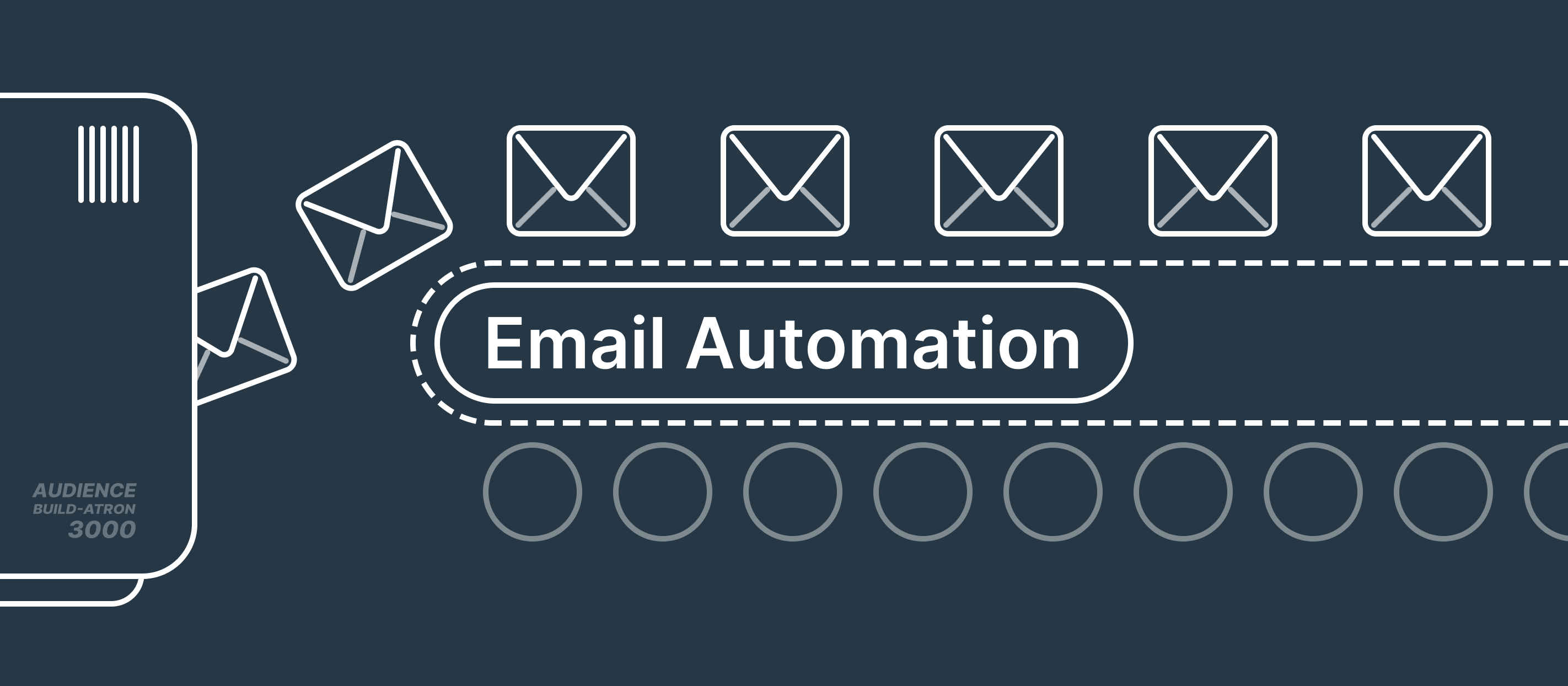
Automation Workflows: Set It and (Almost) Forget It
Alright, email automation aficionados, it’s time to put your email marketing on autopilot! 🛩️ We’re diving into the world of automation workflows – the secret weapon of successful Shopify store owners. Get ready to watch your sales soar while you sleep!
What Are Email Automation Workflows?
Email automation workflows are like having a super-efficient, never-sleeping assistant who knows exactly when to send the right email to the right person. They’re pre-set sequences of emails triggered by specific actions or timeframes. Let’s break it down:
- Trigger: An action (like making a purchase) or a timeframe (like 30 days after signup) that starts the workflow.
- Conditions: Rules that determine who should receive the emails in the workflow.
- Actions: The emails that are sent as part of the workflow.
As John Lee Dumas puts it, “Automation is to your business what compound interest is to your money – it multiplies your efforts exponentially over time.” Let’s explore how to make it work for your Shopify store!
Essential Automation Workflows for Shopify Stores
While the possibilities for automation are endless, there are some key workflows that every Shopify store should have:
- Welcome Series: Introduce new subscribers to your brand and products.
- Abandoned Cart: Remind shoppers about items they left in their cart.
- Post-Purchase: Thank customers for their purchase and encourage reviews.
- Re-engagement: Win back customers who haven’t purchased in a while.
- Birthday/Anniversary: Celebrate milestones with your customers.
Let’s dive deeper into each of these workflows and see how to make them work harder for your store.
The Welcome Series: Making a Great First Impression
Your welcome series is like a digital handshake – it sets the tone for your relationship with new subscribers. Here’s a simple yet effective 3-email welcome series:
- Email 1 (Immediate): Welcome them warmly, deliver any promised lead magnets, and set expectations for future emails.
- Email 2 (Day 2): Share your brand story and values. This helps create an emotional connection.
- Email 3 (Day 4): Introduce your best-selling products and include a special offer for new subscribers.
Remember, as Neil Patel says, “The first impression is the last impression. Make it count!”
The Abandoned Cart Workflow: Rescuing Lost Sales
Did you know that the average cart abandonment rate is around 70%? That’s a lot of potential sales slipping through the cracks! Here’s a workflow to help recover those lost sales:
- Email 1 (1 hour after abandonment): A gentle reminder about the items in their cart.
- Email 2 (24 hours after abandonment): Address common objections and maybe offer free shipping.
- Email 3 (72 hours after abandonment): Create urgency with a limited-time discount.
Pro tip: Use humor in your abandoned cart emails. A little personality can go a long way in getting that sale!
The Post-Purchase Workflow: Turning One-Time Buyers into Loyal Customers
The sale isn’t the end – it’s just the beginning of your relationship with a customer. Here’s a workflow to nurture that relationship:
- Email 1 (Immediately after purchase): Order confirmation and thank you.
- Email 2 (When item ships): Shipping confirmation with tracking info.
- Email 3 (A few days after delivery): Check-in to ensure they’re happy and ask for a review.
- Email 4 (2 weeks after purchase): Product care tips or usage ideas.
- Email 5 (1 month after purchase): Introduce complementary products.
As Rand Fishkin says, “Don’t just sell a product – sell an outcome, a transformation, a better version of your customer.” Use your post-purchase emails to reinforce the positive change your product brings to your customer’s life.
The Re-engagement Workflow: Winning Back Inactive Customers
It’s easier (and cheaper) to sell to existing customers than to acquire new ones. Here’s a workflow to re-engage customers who haven’t purchased in a while:
- Email 1 (60 days after last purchase): “We miss you!” email with new product highlights.
- Email 2 (75 days after last purchase): Offer a special discount to come back.
- Email 3 (90 days after last purchase): Ask for feedback – why haven’t they purchased recently?
- Email 4 (100 days after last purchase): Last-chance offer before they’re removed from your active list.
Remember, sometimes a breakup email can actually re-engage customers. Don’t be afraid to let them know you’ll stop emailing if they’re no longer interested.
The Birthday/Anniversary Workflow: Celebrating Milestones
Everyone loves to feel special on their birthday. Here’s a simple workflow to celebrate your customers:
- Email 1 (7 days before birthday): “Your birthday is coming!” with a preview of their gift.
- Email 2 (On birthday): “Happy Birthday!” with their special offer or gift.
- Email 3 (7 days after birthday): Last chance to use their birthday offer.
You can use a similar workflow for the anniversary of their first purchase or sign-up date.
Advanced Automation Techniques
Ready to take your automation game to the next level? Here are some advanced techniques to consider:
- Predictive Sending: Use AI to determine the best time to send emails to each individual subscriber.
- Dynamic Content: Change the content of your emails based on subscriber data or behavior.
- Cross-Channel Automation: Integrate your email automation with other channels like SMS or social media ads.
- Behavioral Triggers: Set up workflows based on specific on-site behaviors, like viewing a certain product multiple times.
As Pat Flynn advises, “Automation is not about being lazy. It’s about being efficient with your time so you can focus on the things that truly matter in your business.”
Best Practices for Email Automation
To make sure your automation workflows are working as hard as possible for your Shopify store, keep these best practices in mind:
- Always Provide Value: Every automated email should offer something useful to the recipient.
- Personalize: Use the data you have to make your automated emails feel personal and relevant.
- Test and Optimize: Regularly review the performance of your workflows and make improvements.
- Keep It Fresh: Update your automated emails regularly to keep them current and engaging.
- Don’t Over-Automate: Make sure there’s still a human touch in your email marketing.
Neil Patel reminds us, “Automation is meant to enhance the customer experience, not replace human interaction. Use it wisely.”
Measuring the Success of Your Automation Workflows
To ensure your automation workflows are delivering results, keep an eye on these key metrics:
- Open Rates: Are people actually opening your automated emails?
- Click-Through Rates: Are recipients engaging with the content of your emails?
- Conversion Rates: Are your workflows leading to actual sales?
- Revenue Per Email: How much money is each automated email generating?
- Unsubscribe Rates: Are your automated emails causing people to opt-out?
Remember, as John Lee Dumas says, “What gets measured, gets managed. What gets managed, gets improved.”
Common Automation Pitfalls to Avoid
While automation can be incredibly powerful, there are some common mistakes to watch out for:
- Over-Automation: Don’t bombard your subscribers with too many automated emails.
- Lack of Personalization: Automated doesn’t mean one-size-fits-all. Use the data you have to make your emails relevant.
- Set-and-Forget Mentality: Automation requires ongoing monitoring and optimization.
- Ignoring Unsubscribes: If someone unsubscribes from one workflow, make sure they’re removed from all your automations.
- Poor Timing: Be mindful of when your automated emails are being sent. Nobody wants a promotional email at 3 AM!
As Rand Fishkin wisely notes, “The goal of automation isn’t to remove the human element, but to enhance it. Use technology to be more human, not less.”
The Future of Email Automation
As we look ahead, the future of email automation is exciting. Here are some trends to watch:
- AI-Powered Personalization: Machine learning will enable even more sophisticated personalization.
- Predictive Analytics: Automation tools will get better at predicting customer behavior and preferences.
- Interactive Emails: Expect to see more emails that allow subscribers to take action directly within the email.
- Voice-Activated Emails: As voice assistants become more prevalent, email may adapt to be more voice-friendly.
The key is to stay curious and keep learning. As Pat Flynn says, “The only way to win is to learn faster than anyone else.”
Wrapping Up: The Power of Automation
Email automation is like having a tireless sales team working 24/7 to nurture leads, close sales, and keep your customers coming back for more. When done right, it can dramatically increase your revenue while freeing up your time to focus on other aspects of your business.
Remember, the goal of automation is not to remove the personal touch from your marketing, but to scale your ability to deliver personalized, relevant content to your subscribers at exactly the right moment.
As you implement these automation workflows in your Shopify store, keep this quote from Seth Godin in mind: “Marketing is no longer about the stuff that you make, but about the stories you tell.” Use your automated emails to tell your brand’s story, build relationships with your customers, and create experiences that keep them coming back for more.
In our next section, we’ll explore how to measure the success of your email marketing efforts and use data to continually improve your strategies. Get ready to dive into the world of email marketing metrics and analytics! 📊🚀
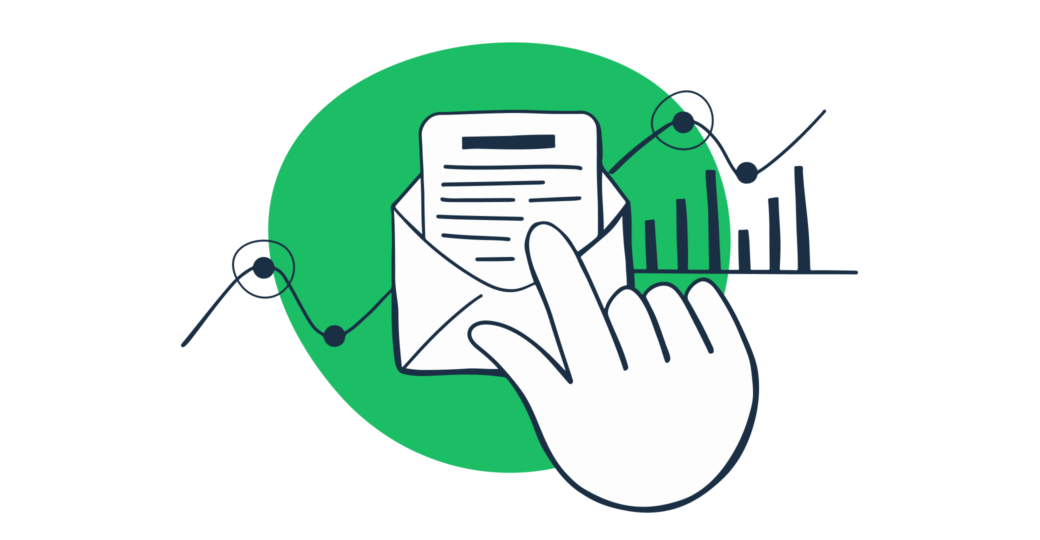
Measuring Success: Key Metrics and Analytics
Welcome to the number-crunching, data-diving part of our email marketing journey! 🤓📊 Don’t worry if math wasn’t your favorite subject in school – I promise to make this fun and actionable. After all, as the legendary management consultant Peter Drucker said, “What gets measured gets managed.” So let’s learn how to measure and manage our way to email marketing success!
Why Metrics Matter in Email Marketing
Before we dive into the specific metrics, let’s talk about why they’re so crucial. Metrics are like the dashboard in your car – they tell you how fast you’re going, how much fuel you have left, and whether anything needs your immediate attention. In email marketing, metrics help you:
- Understand what’s working (and what’s not)
- Make data-driven decisions
- Justify your email marketing efforts to stakeholders
- Continuously improve your strategy
As Neil Patel puts it, “Without data, you’re just another person with an opinion.” Let’s make sure your email marketing strategy is based on solid data, not just hunches!
Key Email Marketing Metrics for Shopify Stores
There are dozens of metrics you could track, but let’s focus on the most important ones for Shopify store owners:
- Open Rate: The percentage of recipients who open your email.
- Click-Through Rate (CTR): The percentage of recipients who click on a link in your email.
- Conversion Rate: The percentage of recipients who take the desired action (usually making a purchase).
- Revenue Per Email (RPE): The average amount of revenue generated by each email you send.
- List Growth Rate: How quickly your email list is growing.
- Unsubscribe Rate: The percentage of recipients who opt out of your emails.
- Bounce Rate: The percentage of emails that couldn’t be delivered.
Let’s dive deeper into each of these metrics and see how you can use them to improve your email marketing.
Open Rate: Getting Your Foot in the Door
Your open rate tells you how many people are actually seeing your emails. A low open rate means your emails aren’t even getting a chance to work their magic.
How to calculate: (Number of emails opened ÷ Number of emails delivered) × 100
What’s a good open rate? According to Mailchimp, the average open rate for e-commerce emails is around 15.68%.
How to improve your open rate:
- Write compelling subject lines
- Optimize your preheader text
- Send at the right time
- Segment your list for more targeted emails
Remember, as Rand Fishkin says, “The subject line is a promise. The email content needs to deliver on that promise.”
Click-Through Rate (CTR): Engaging Your Audience
Your CTR shows how engaging your email content is. If people are opening your emails but not clicking, your content might not be hitting the mark.
How to calculate: (Number of clicks ÷ Number of emails delivered) × 100
What’s a good CTR? For e-commerce, a CTR of 2-5% is considered good.
How to improve your CTR:
- Use clear and compelling calls-to-action (CTAs)
- Make your emails mobile-friendly
- Use eye-catching images and designs
- Personalize your content
John Lee Dumas reminds us, “Every email should have a clear purpose and a single, unmistakable call-to-action.”
Conversion Rate: Turning Clicks into Customers
This is where the rubber meets the road. Your conversion rate tells you how many people are actually taking the desired action after clicking through from your email.
How to calculate: (Number of people who completed the desired action ÷ Number of emails delivered) × 100
What’s a good conversion rate? For e-commerce emails, a conversion rate of 1-5% is considered good.
How to improve your conversion rate:
- Ensure a seamless transition from email to landing page
- Use persuasive copy and strong CTAs
- Create a sense of urgency or scarcity
- Offer incentives (discounts, free shipping, etc.)
As Pat Flynn says, “Your email list is a group of people who have raised their hands and said, ‘Yes, I want to hear more from you.’ Don’t waste that opportunity!”
Revenue Per Email (RPE): The Bottom Line
This metric tells you exactly how much money each email is generating for your store. It’s a great way to measure the overall effectiveness of your email marketing efforts.
How to calculate: Total revenue generated from email ÷ Number of emails sent
What’s a good RPE? This varies widely depending on your industry and products, but in general, if your RPE is increasing over time, you’re on the right track.
How to improve your RPE:
- Segment your list for more targeted offers
- Test different types of promotions
- Optimize your email frequency
- Improve your overall email strategy based on other metrics
Neil Patel reminds us, “Don’t just focus on making sales. Focus on creating valuable experiences for your customers, and the sales will follow.”
List Growth Rate: Building Your Audience
Your list growth rate shows how quickly you’re acquiring new subscribers (minus any unsubscribes or bounces).
How to calculate: [(Number of new subscribers – Number of unsubscribes) ÷ Total number of email addresses on your list] × 100
What’s a good list growth rate? Aim for a positive growth rate – even 1-2% monthly growth is good.
How to improve your list growth rate:
- Optimize your sign-up forms
- Offer valuable lead magnets
- Use social media to promote your email list
- Run contests or giveaways
Remember, as Rand Fishkin says, “It’s not about the size of your list, it’s about the quality of your subscribers.”
Unsubscribe Rate: Keeping Your Audience Engaged
Your unsubscribe rate tells you how many people are opting out of your emails. A high unsubscribe rate could indicate that your content isn’t resonating with your audience.
How to calculate: (Number of unsubscribes ÷ Number of emails delivered) × 100
What’s a good unsubscribe rate? Aim to keep your unsubscribe rate below 0.5%.
How to reduce your unsubscribe rate:
- Segment your list for more relevant content
- Don’t email too frequently
- Provide value in every email
- Set clear expectations at sign-up
John Lee Dumas advises, “Every email is a deposit in the bank of trust with your subscribers. Make sure you’re always adding value, not just making withdrawals.”
Bounce Rate: Ensuring Deliverability
Your bounce rate shows how many of your emails aren’t reaching their intended recipients. A high bounce rate can hurt your sender reputation and affect deliverability.
How to calculate: (Number of bounced emails ÷ Number of emails sent) × 100
What’s a good bounce rate? Try to keep your bounce rate below 2%.
How to reduce your bounce rate:
- Regularly clean your email list
- Use double opt-in to ensure email addresses are valid
- Avoid using spam trigger words
- Authenticate your emails with SPF and DKIM
Pat Flynn reminds us, “A clean email list is worth its weight in gold. Don’t be afraid to remove inactive subscribers.”
Using Analytics to Drive Strategy
Now that you know what to measure, let’s talk about how to use these metrics to improve your email marketing strategy:
- Benchmark Your Performance: Compare your metrics to industry standards and your own past performance.
- Identify Trends: Look for patterns over time. Are certain types of emails performing better than others?
- Test and Optimize: Use A/B testing to experiment with different elements of your emails.
- Segment Your Analysis: Look at how different segments of your list perform.
- Set Goals: Use your metrics to set realistic, data-driven goals for your email marketing.
Remember, as Neil Patel says, “Data-driven marketing is not about the data; it’s about the insights you derive from it.”
Advanced Analytics: Going Beyond the Basics
Ready to take your analytics game to the next level? Here are some advanced metrics to consider:
- Email Sharing/Forwarding Rate: How often are your emails being shared?
- List Engagement Score: A composite score based on opens, clicks, and conversions.
- Subscriber Lifetime Value: How much revenue does the average subscriber generate over time?
- Mobile Open Rate: What percentage of your emails are being opened on mobile devices?
- Return on Investment (ROI): The overall return on your email marketing efforts.
As you dive deeper into these metrics, remember Rand Fishkin’s advice: “Don’t just collect data, connect data.”
Tools for Measuring Email Marketing Success
Fortunately, you don’t have to calculate all these metrics manually. Here are some tools that can help:
- Shopify Email: Offers basic analytics for your email campaigns.
- Google Analytics: Can track email traffic and conversions on your site.
- Klaviyo: Provides advanced email marketing analytics specifically for e-commerce.
- Litmus: Offers email testing and analytics tools.
- Mailchimp: Provides comprehensive email marketing analytics.
Remember, the tool is only as good as the person using it. As Pat Flynn says, “Tools are great, but content and strategy are better.”
Wrapping Up: The Power of Email Marketing Metrics
Measuring the success of your email marketing efforts isn’t just about collecting numbers – it’s about gaining insights that can help you create better, more effective email campaigns. By consistently tracking and analyzing these key metrics, you can optimize your email marketing strategy, improve your relationship with your subscribers, and ultimately, boost your Shopify store’s bottom line.
Remember, improvement is an ongoing process. As John Lee Dumas says, “Success is not a destination, it’s a journey. Keep testing, keep measuring, and keep improving.”
In our final section, we’ll explore some advanced techniques and best practices to take your Shopify email marketing to the next level. Get ready to become an email marketing maestro! 🎭🚀
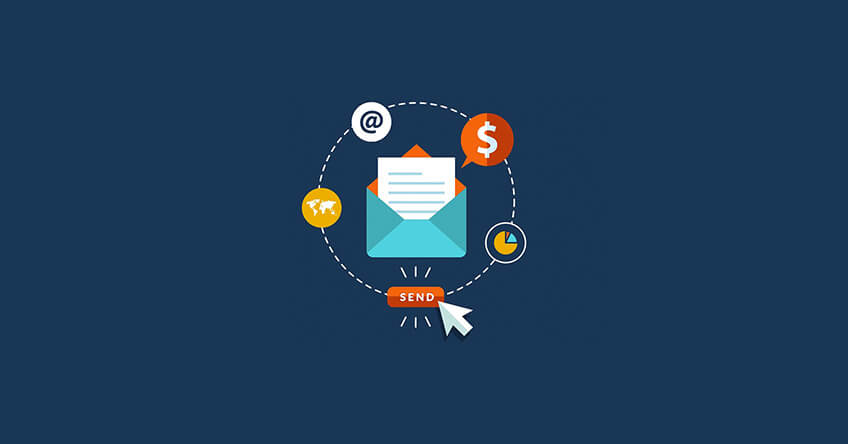
Advanced Techniques and Best Practices
Welcome to the grand finale of our Shopify email marketing extravaganza! 🎭🚀 You’ve come a long way, and now it’s time to add some advanced techniques to your email marketing toolkit. These strategies will help you stand out in crowded inboxes and take your Shopify store to new heights. So, let’s dive in and explore the cutting edge of email marketing!
AI and Machine Learning in Email Marketing
Artificial Intelligence (AI) and Machine Learning (ML) are revolutionizing email marketing. Here’s how you can leverage these technologies:
- Predictive Analytics: Use AI to predict which products a customer is most likely to buy next.
- Send Time Optimization: ML algorithms can determine the best time to send emails to each individual subscriber.
- Dynamic Content: AI can help personalize email content in real-time based on user behavior and preferences.
- Subject Line Optimization: AI tools can generate and test subject lines to improve open rates.
As Neil Patel says, “AI is not replacing marketers. It’s making them superheroes.” Embrace these technologies to supercharge your email marketing efforts!
Interactive Emails: Engaging Subscribers Like Never Before
Static emails are so last decade. Interactive emails allow subscribers to take action directly within the email, creating a more engaging experience. Here are some interactive elements to consider:
- Carousels: Let subscribers browse multiple products without leaving the email.
- Animated Buttons and CTAs: Add movement to draw attention to your call-to-action.
- Polls and Surveys: Gather feedback and engage subscribers simultaneously.
- Gamification: Include simple games or scratch-off reveals for discounts.
- Add-to-Cart Functionality: Allow subscribers to add items to their cart directly from the email.
Remember, as Rand Fishkin advises, “Don’t just create content. Create experiences.” Interactive emails are a great way to create memorable experiences for your subscribers.
Hyper-Personalization: Taking Segmentation to the Next Level
We’ve talked about segmentation, but hyper-personalization takes it a step further. This involves using all available data to create highly individualized email experiences. Here’s how to implement hyper-personalization:
- Behavioral Triggers: Send emails based on specific on-site behaviors.
- Purchase History Analysis: Recommend products based on past purchases and browsing history.
- Location-Based Offers: Use geolocation data to send relevant, location-specific content.
- Weather-Based Campaigns: Promote products based on the weather in the subscriber’s area.
- Personal Milestones: Celebrate customer anniversaries or acknowledge frequent purchases.
As John Lee Dumas puts it, “The future of email marketing is not about sending emails. It’s about sending the right emails.” Hyper-personalization helps ensure you’re always sending the right email to the right person.
User-Generated Content (UGC) in Emails
User-generated content can be a powerful tool in your email marketing arsenal. It provides social proof and can significantly increase engagement. Here’s how to incorporate UGC in your emails:
- Customer Reviews: Feature positive reviews of your products in your emails.
- Social Media Posts: Showcase how customers are using your products in real life.
- Customer Stories: Share success stories or testimonials from satisfied customers.
- UGC Contests: Encourage customers to submit photos or videos using your products and feature the best entries in your emails.
Pat Flynn reminds us, “Your customers are your best marketers. Let their voices be heard.” UGC allows you to do just that while building trust and authenticity.
Advanced Lifecycle Email Marketing
Lifecycle email marketing involves sending targeted emails based on where a customer is in their journey with your brand. Here’s an advanced approach:
- Prospect: Educational content, lead magnets, and introductory offers.
- First-Time Customer: Welcome series, product usage tips, cross-sell recommendations.
- Active Customer: VIP offers, early access to new products, referral programs.
- At-Risk Customer: Re-engagement campaigns, special “we miss you” offers.
- Lapsed Customer: Win-back campaigns, surveys to understand why they left.
Remember, as Neil Patel says, “The goal of lifecycle marketing is not just to make a sale, but to create a customer for life.”
Email Accessibility: Ensuring Everyone Can Engage
Making your emails accessible to all subscribers, including those with disabilities, is not just good practice – it’s essential. Here are some tips for improving email accessibility:
- Use Semantic HTML: This helps screen readers interpret your email correctly.
- Provide Alt Text for Images: Describe images for those who can’t see them.
- Maintain Good Color Contrast: Ensure text is easily readable against the background.
- Use a Logical Reading Order: Structure your content in a way that makes sense when read aloud.
- Make CTAs Clear and Descriptive: Avoid vague phrases like “Click Here”.
As Rand Fishkin reminds us, “Accessibility isn’t just about doing the right thing. It’s about expanding your audience and improving the experience for everyone.”
Privacy and Data Protection: Navigating the New Landscape
With regulations like GDPR and CCPA, and Apple’s Mail Privacy Protection, email marketers need to be more mindful than ever about privacy and data protection. Here are some best practices:
- Be Transparent: Clearly communicate how you’ll use subscriber data.
- Implement Double Opt-In: This ensures subscribers really want to be on your list.
- Regularly Clean Your List: Remove inactive subscribers to maintain a healthy, engaged list.
- Respect Privacy Choices: Make it easy for subscribers to update their preferences or unsubscribe.
- Adapt to New Privacy Features: Be prepared to shift strategies as new privacy features emerge.
John Lee Dumas reminds us, “Trust is the currency of the internet. Guard it carefully.”
Cross-Channel Integration: Email as Part of a Larger Strategy
While email is powerful, it’s even more effective when integrated with other marketing channels. Here’s how to create a cohesive cross-channel strategy:
- Social Media Integration: Use email to promote your social channels and vice versa.
- SMS Marketing: Use text messages for time-sensitive offers or as part of a multi-touch campaign.
- Retargeting Ads: Use email engagement data to inform your ad targeting on platforms like Facebook or Google.
- Direct Mail: Yes, physical mail can still be effective, especially when coordinated with your email efforts.
- In-Store Experiences: If you have a physical store, use email to drive foot traffic and enhance the in-store experience.
Pat Flynn advises, “Don’t put all your eggs in one basket. A diverse, integrated marketing strategy is key to long-term success.”
The Future of Email Marketing: Staying Ahead of the Curve
As we look to the future, here are some trends to watch in email marketing:
- Voice-Activated Emails: As smart speakers become more prevalent, emails may need to be optimized for voice.
- Augmented Reality (AR) in Emails: Imagine letting customers virtually “try on” products right in their inbox.
- Even More Personalization: As AI advances, we’ll see even more sophisticated personalization techniques.
- Greater Emphasis on Privacy: As regulations evolve, privacy-first email marketing will become the norm.
- Integration with Emerging Platforms: Email may need to adapt to new communication platforms we haven’t even imagined yet.
As Neil Patel reminds us, “The only constant in marketing is change. Stay curious, keep learning, and always be ready to adapt.”
Final Thoughts: Mastering the Art and Science of Email Marketing
Congratulations! You’ve made it through our comprehensive guide to Shopify email marketing. From building your list to measuring success and implementing advanced techniques, you now have the tools to create a world-class email marketing strategy for your Shopify store.
Remember, email marketing is both an art and a science. It requires creativity to craft compelling messages, analytical skills to interpret data, and a willingness to continually learn and adapt. As you implement these strategies, keep these final pieces of advice in mind:
- Always Provide Value: Every email should offer something useful to your subscribers.
- Test, Measure, Improve: Continually refine your approach based on data and feedback.
- Stay Human: Despite all the technology, email is still about connecting with real people.
- Respect Your Subscribers: Treat your email list as the valuable asset it is.
- Keep Learning: The world of email marketing is always evolving. Stay curious and keep up with new trends and technologies.
As we wrap up, let’s recall the words of Seth Godin: “Marketing is no longer about the stuff that you make, but about the stories you tell.” Use your email marketing to tell your brand’s story, build relationships with your customers, and create experiences that keep them coming back to your Shopify store again and again.


